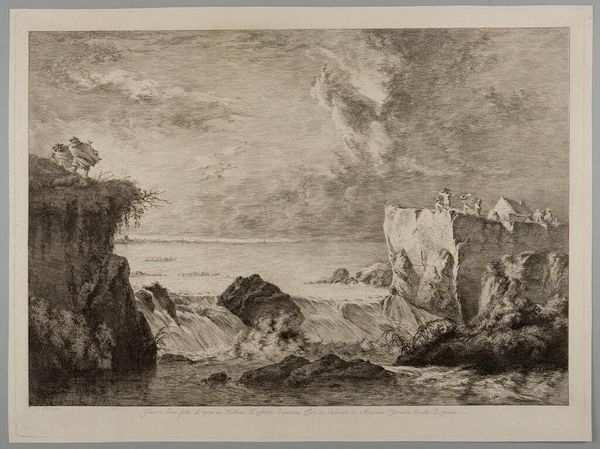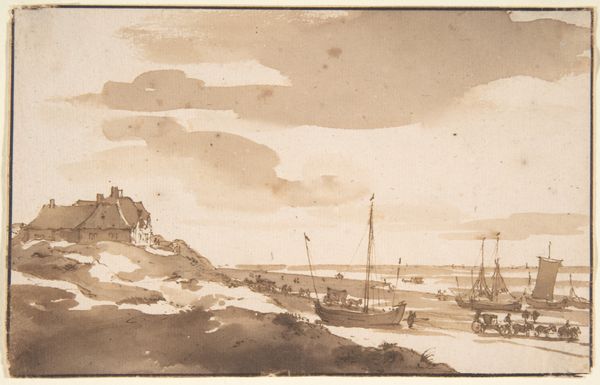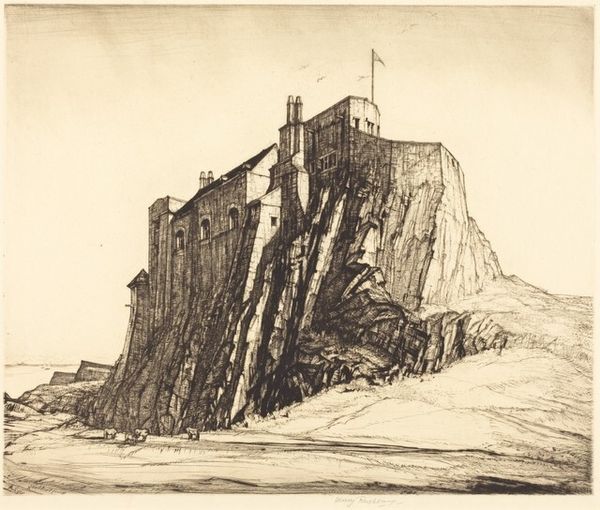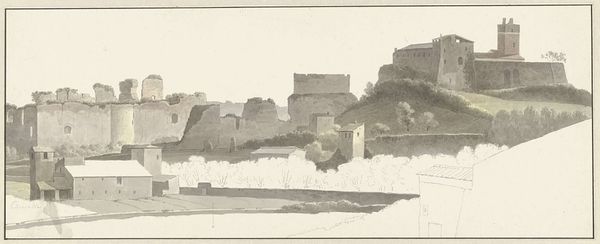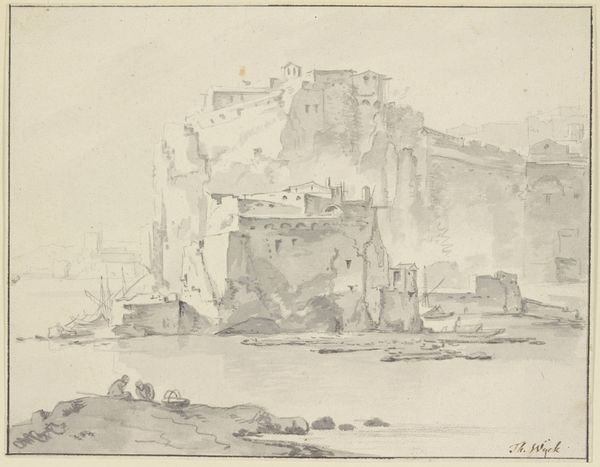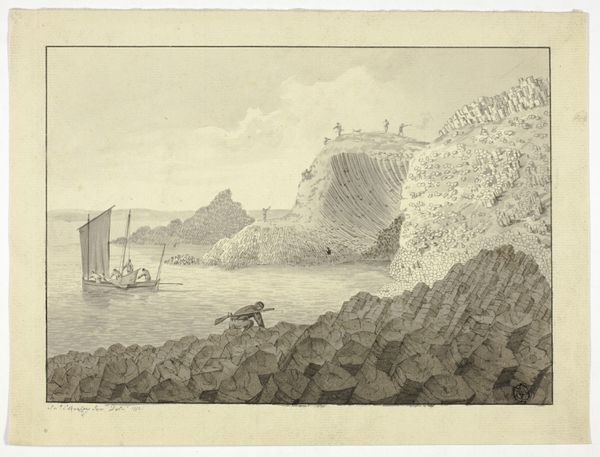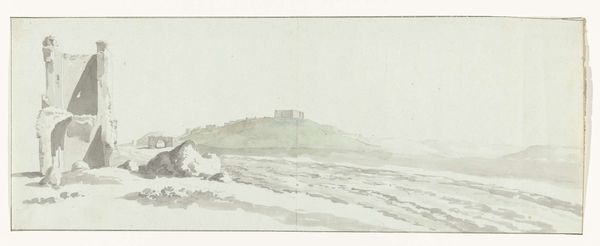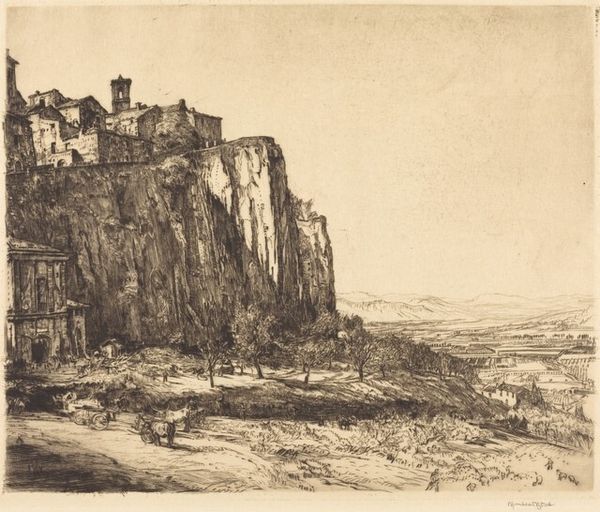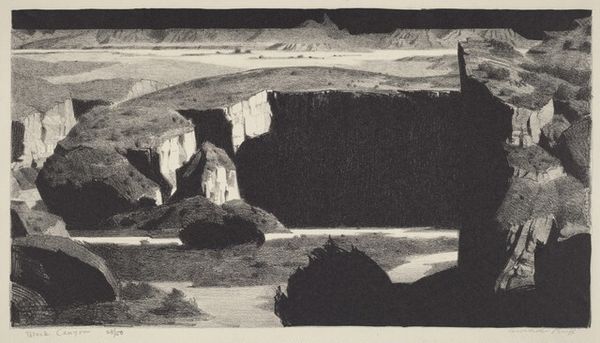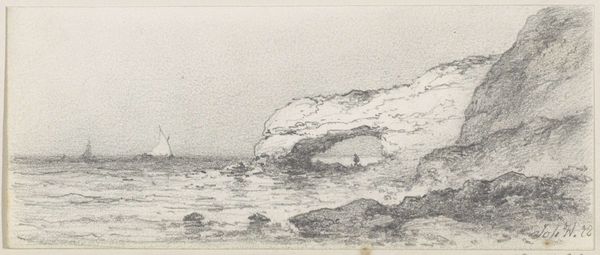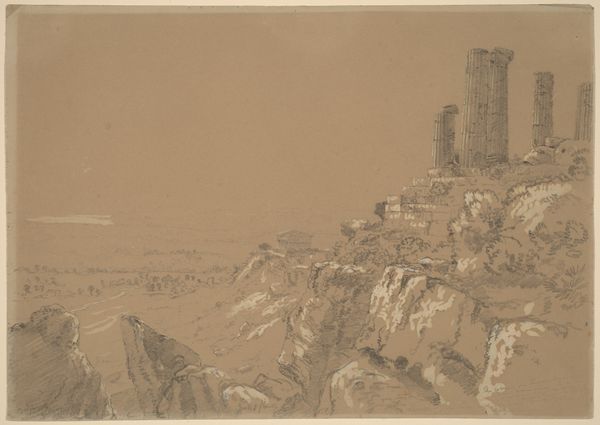
drawing, watercolor
drawing
neoclacissism
landscape
watercolor
15_18th-century
cityscape
watercolour illustration
Dimensions height 139 mm, width 269 mm
Curator: Louis Ducros' "Gezicht op Polignano," made in 1778, is a fascinating watercolor and pen drawing, currently housed in the Rijksmuseum. Editor: Stark, isn't it? Bleak, almost. That limited palette really emphasizes the harshness of the landscape and the precarious position of the town itself. Curator: Indeed. Observe how Ducros employs stark contrasts in tone and shadow to define form. The architecture clings precariously to the jagged cliffs, forming an almost impenetrable barrier. The repetition of cubic forms reinforces the stability of the structure. Editor: And think about that 'barrier' metaphorically. In the 18th century, depictions of such fortified coastal towns were often used to signal the might and dominion of powerful, ruling empires over their subjects. The lack of color further emphasizes that power, as if the landscape itself has been bleached under the weight of colonial authority. Curator: The composition is key. Notice how the receding planes draw the eye towards the horizon line and create a sense of depth, despite the flattened perspective. The minimalist use of color contributes to the overall impression of austere grandeur. Editor: While I appreciate your formal reading, I see that austerity as speaking volumes about social control. White or whitewashed buildings can carry powerful connotations. How did the residents experience the town, both physically and psychologically, as a restrictive space under constant surveillance? Who benefitted from its protection and at whose expense? Curator: Interesting point. And the small ships in the distance do lend themselves to narratives of trade and control, economic and political systems, I suppose. For me, I am continually drawn to the pure forms, almost like geometric solids dropped along the Italian coast. The subtle washes build depth, the light playing on the rocky cliffs... Editor: Absolutely. Though I'd also argue that Ducros, intentionally or not, captured the visual representation of power relations, embedded in that dramatic seascape. It invites us to reflect critically on whose stories are foregrounded. Curator: Food for thought. Ducros definitely gives us much to ponder. Editor: Precisely. It encourages an expanded consciousness of how structures – physical and social – can shape, and perhaps even confine, our human experiences.
Comments
No comments
Be the first to comment and join the conversation on the ultimate creative platform.

